HOME >> CHINA
Q&A: What is Mid-Autumn Festival?
Source:Xinhua Published: 2019/9/12 19:54:48 Last Updated: 2019/9/13 9:38:47
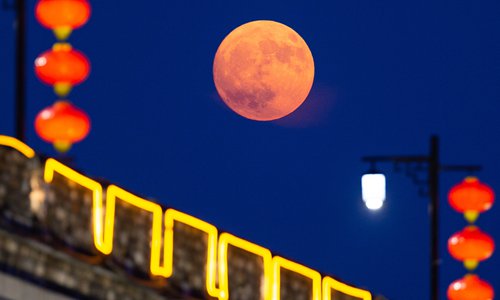
The full moon over the ancient city walls in Nanjing, east China's Jiangsu Province (Xinhua/Su Yang)
Food glorious food! No Chinese festival is complete without the celebration's corresponding cuisine. Check out our Q&A on Mid-Autumn Festival...
Spring Festival minus jiaozi (dumplings)? Forget it! Dragon Boat Festival that doesn't include eating zongzi (gluttonous rice wrapped in leaves)? Ridiculous! Mid-Autumn Festival without mooncakes? Don't even think about it!
While delicious food is essential to these annual festivities, they are just the icing on the cake for these traditional events. With Mid-Autumn Festival just around the corner, we have compiled a quick overview of what it is all about.
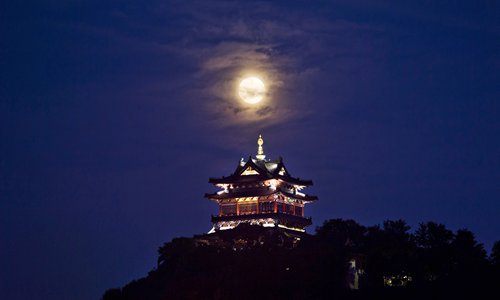
The moon above the Yuntai Mountain in Zhenjiang, east China's Jiangsu Province (Xinhua/Chen Gang)
-- When is Mid-Autumn Festival?
Like many Chinese festivals, Mid-Autumn Festival doesn't have a fixed date because it is determined by the Chinese lunar calendar. It is traditionally celebrated on the 15th day of the eighth lunar month. That means this year, it will be on Sept. 13.
According to the lunar calendar, the moon is at its fullest and brightest on that day. It was once believed that the bright orange glow of the Moon promised a golden harvest.
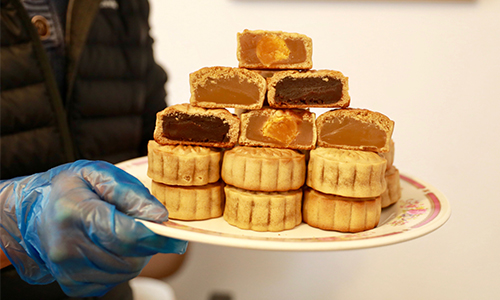
Mooncakes made by local Chinese in Canberra, Australia. (Photo by Chu Chen/Xinhua)
-- What is a mooncake?
A mooncake is as round as the full moon. Its shape symbolizes family reunion, and so the best way to eat a mooncake is to cut it into pieces and share it with your nearest and dearest.
It looks a bit like a small pie, and like a pie it often has a patterned top and can come in a variety of flavors -- depending on the regions the preferred flavor profile differs; Sweet, salty and even spicy.
Everyone has different preferences. The classic five-nut mooncake always causes heated discussion as you either go nuts for the peanut, almond, pine nut, melon-seed and sesame combination, or dislike the hard and oily texture.
Another classic filling, which is quite popular in south China, is salty yolk paired with either sweet lotus seed paste or sweet bean paste.
Mooncakes might be a time-honored tradition but that doesn't make them immune to the changing of the times and new, unusual fillings like cream cheese, matcha or custard have become popular in recent years.
Which flavor do you like the sound of?
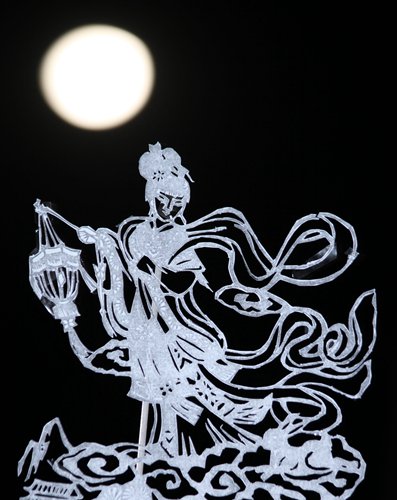
A paper cutting figure of Chang'e, the Chinese moon goddess (Xinhua)
-- Who is Chang'e?
The legend of the Chinese moon goddess Chang'e is known by everyone in China, however, just like the many flavors of mooncakes, Chang'e's story has taken on a life of its own, and everybody tells it differently.
One version begins with the Chinese moon goddess' husband Houyi, who wins an elixir after shooting down nine of ten suns. Then the story splits -- was Chang'e so selfish that she drank the elixir or was she was forced to do so?
No matter her motive, the story ends the same way; with Chang'e and Yutu, her rabbit companion, fated to live on the moon for eternity.
There is another character, from a totally different tale, who also lives on the moon. He is a lumberjack with a relentless task -- chopping a cassia tree which can restore itself with each blow, just like Sisyphus forever rolling the stone up the hill.
These two yarns are sometimes woven together as a love story with these two lonely ghosts on the moon...

People put lanterns into an ancient canal to celebrate Mid-Autumn Festival in Taierzhuang, east China's Shandong Province. (Xinhua/Gao Qimin)
-- What other activities happen during Mid-Autumn Festival?
Mid-Autumn was first celebrated during the Northern Song Dynasty (960-1279), it was one of a few times a year that night markets would be held, which meant it was great for socializing. In the past, when making and lighting paper lanterns, scholars dreamed of fame, while the young would pray for romance. Chinese across the country still enjoy the evening out and about with their friends.
People really do just look at the moon. In literature, and song, the moon is celebrated as a dependable friend -- something for the lonely to talk to. It is seen as a symbol of absence, and so people can look at it and remember those that they miss.
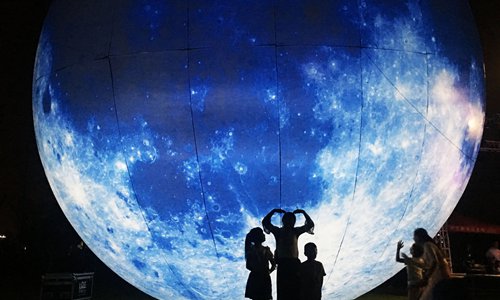
Pedestrians pose for photos with a moon installation set up to mark the Mid-Autumn Festival in Bozhou, east China's Anhui Province. (Xinhua/Ni Shubin)
Mid-Autumn Festival is about so much more than just the food -- memory, love, loss, celebration, family, closeness -- but that doesn't mean you should pass on those mooncakes!
Posted in: SOCIETY